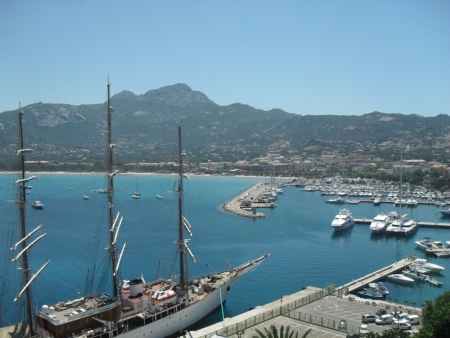France: More on New Clearance System
Following the announcement of a new entry/exit system meaning yachts arriving in France from outside the EU/Schengen now have a multitude of ports to choose for entry, further details have now become available. This report hopefully answers alot of the questions sailors intending to go to France will have, and will be continually updated as more clarification comes in.
Published 6 months ago, updated 5 months ago
Our thanks to TransEurope Marinas and Digimap Marinas for sharing this information with Noonsite.
The Fédération Française de Ports de Plaisance (FFPP – French Federation of Marinas) announced last week that 53 French marinas had voluntarily signed up to assist boaters with a new system that both broadens and simplifies border controls for yachts travelling to France from outside the EU/Schengen area (and departing from France to a third country). The process as to how this will be carried out has now been made much clearer and it’s a game-changer for yachts clearing into France from outside the EU/Schengen as they no longer have to arrive in a port of entry (PPF), but instead can arrive at a non-PPF, giving them a much wider choice of ports for entry and exit. While this is particularly useful for British sailors cruising to France or indeed European boaters leaving France for the UK and Channel Islands, it applies to all yachts (EU or non-EU) that are clearing into or out of France from/to third (non-EU) countries.


What is the Process to enter at a non-PPF?
Using a single generic Word document (which can be downloaded here) and completed on a mobile phone, boaters can fill in this form and send it to the participating marinas at least 24 hours prior to arrival – or when leaving the previous port outside the Schengen area, if the voyage time is less than twenty-four hours.
- See list of French marinas participating in the new clearance system
- See map of France showing all participating marinas
The marinas will then take care of transmitting documents to the relevant border control authorities and authorise arrival.
FFPP stresses that this new system doesn’t replace standard Schengen protocols and that those departing by plane or ferry or otherwise requiring a passport stamp, will need to obtain this from official Immigration offices, such as those in the existing PPF ports.
Entry and departure can be effected in each of the participating marinas, and there is no need to arrive and depart from the same location.
What about Normal Ports of Entry (PPF)?
If a boat arrives in France via a non-PPF port (as outlined above) it should only leave by another non-PPF port. No inspection of passports is required, as all information concerning persons on board is contained in the Declarations of Arrival and Departure submitted to the marina authorities for onward transmission to the Border Authorities.
If a boat arrives and leaves by the same non-PPF port, no inspection of passports is required for the same reasons as given in the above point.
If a boat arrives in France via a PPF port, it must leave via a PPF port, and passports will be stamped on arrival and departure by the Border Authorities, although Declarations of Arrival and Departure must still be submitted to the relevant marina authorities. See France Clearance for more details of the process when clearing in at a PPF.
In the event that a boat arrives in France via a non-PPF port with the intention of leaving France via a PPF port, be warned that all those on board must present themselves ON ARRIVAL to the PPF port to which the non-PPF port is attached, to have their passports stamped. For example as Brest is the PPF for L’Aber Wrac’h and L’Aber Wrac’h is the entry port into France, the boat should proceed initially to Brest before continuing to L’Aber Wrac’h.
When planning a cruise this requirement must be taken into account to avoid any delays or misunderstandings
Feedback is Welcome
FFPP general manager, Guillaume Nardin, an experienced offshore cruiser himself, announced his satisfaction with the new arrangement:
“We’re very happy to have signed this derogation agreement with the French customs and border control authorities and would like to express our thanks to the participating marinas for their interest in helping ease entry procedures for third-country nationals. Naturally we have just started and given that this is a voluntary operation, we ask for a little tolerance while we get underway! Feedback is welcome and we will collaborate with associations to help channel comments and evaluate and optimise the system.”
Regarding the anticipated new digital Entry/Exit System (ESS), this is previewed for the end of 2024 at the earliest and so the current system will remain in place until then.
The relevant documents are expected to be posted online on the FFPP website later this month: https://www.ffports-plaisance.com/
Let us know how the new French entry/exit procedure worked for you, by posting a comment on this news item (using the speech bubble icon).
………………………………
Related Links:
First news announcement: New Entry Protocol for yachts arriving from outside the EU (01 June, 2024)
………………………………
Find out all news, reports, links and comments posted on Noonsite, plus cruising information from around the world, by subscribing to our FREE monthly newsletter. Go to https://www.noonsite.com/newsletter/.
Related to following destinations: Ajaccio, Atlantic Coast (France), Barneville-Carteret, Bastia, Bayonne, Boulogne, Brest, Caen-Ouistreham, Calais, Cannes, Channel/North Sea Coast (France), Cherbourg, Corsica, Dieppe, Dunkirk, France, Gironde Estuary & Bordeaux, Granville, Honfleur, La Rochelle, Le Havre, Les Sables d'Olonne, Lorient, Marseille, Monaco, Monaco, Nantes, Nice, Port de Bouc, Port la Nouvelle, Port-Vendres, Roscoff, Saint-Brieuc-Le Légué, Sete, St Nazaire, St. Malo, Toulon-la Seyne
Related to the following Cruising Resources: Atlantic Ocean East, Cruising Information, Documents, Documents, European Union, Mediterranean, Routing






